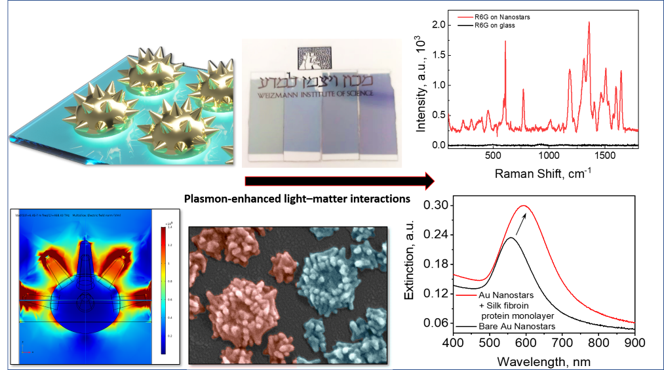Numerous spectroscopic techniques rely on signal enhancement from nanoparticles linked to analyte molecules. However, existing surface-enhanced spectroscopies (SES) typically use nanoparticles dispersed in solution, making them unsuitable for solid substrates. This technology introduces spiked gold nanostructures (“nanostars”) embedded directly on solid-state surfaces to enhance spectroscopic signal detection. Unlike traditional solution-based SES methods, these stable and reusable nanostars enable high-sensitivity signal amplification directly on solid substrates.
- Signal amplification for spectroscopic techniques – SERS, SECD, LSPR, SEFS
- Medical and chemical diagnostics and treatment
- Catalytic processes
- Optical filters
- Integration into microfluidic devices
- Stable & Reusable
- High Scalability
- Enhanced Signal/Noise
- Simple fabrication
- Compatible with lithographic techniques
The technology has been successfully demonstrated for enhancing spectroscopic signals, including SERS, SECD, and LSPR, using small active molecules.


Dr. Vered Pardo Yissar

